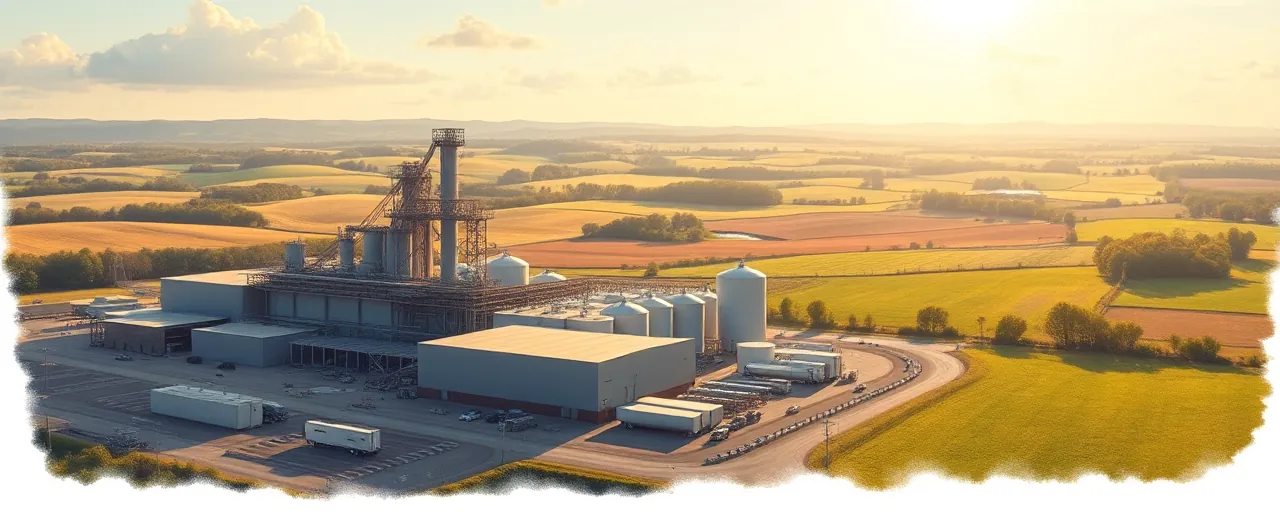A New Chapter for Rome
In the heart of New York’s Mohawk Valley, a quiet transformation is taking root. Chobani, the yogurt giant that reshaped America’s dairy aisle, has broken ground on a $1.2 billion facility in Rome, Oneida County. The 1.4 million-square-foot plant, set to be the largest natural food manufacturing site in the U.S., promises to bring over 1,000 jobs and a surge of economic activity to a region eager for revival.
The announcement, made on April 22, 2025, marks a significant bet on Upstate New York’s future. Chobani’s decision to expand here, after a nationwide search, highlights the region’s skilled workforce, access to East Coast markets, and robust dairy industry. Yet, the project also raises questions about how such a massive investment will ripple through local communities, farms, and the broader economy.
For Rome, a city that has weathered decades of industrial decline, the plant offers a glimmer of optimism. Built on the former Griffiss Air Force Base, the facility taps into a site long eyed for redevelopment. With state and local leaders celebrating the move, the project is being framed as a cornerstone of regional renewal, though its long-term impact remains to be seen.
At its core, this development is about more than yogurt. It’s about jobs, farms, and the chance to reimagine what Upstate New York can be. As construction begins, the stakes are high for workers, farmers, and policymakers alike.
Fueling Jobs and Opportunity
The Rome facility is expected to nearly double Chobani’s New York workforce, creating over 1,000 full-time positions with competitive wages and benefits. Local leaders point to the area’s diverse labor pool, including military veterans and graduates from nearby colleges, as a key draw for the company. Chobani has also pledged to partner with community organizations to train and hire from underserved groups, aiming to broaden access to these opportunities.
State support is playing a big role. Empire State Development has committed up to $73 million in performance-based tax credits tied to job creation, alongside $23 million in infrastructure grants to prepare the site. These incentives reflect New York’s broader push to attract high-impact industries, but they also spark debate. While supporters argue the investment will generate far-reaching economic benefits, others question whether such subsidies disproportionately favor large corporations over smaller businesses.
Workforce development is another focus. Chobani’s collaboration with local educational institutions aims to build skills training programs tailored to the plant’s needs. This approach aligns with national trends in manufacturing, where companies are increasingly investing in inclusive hiring to address labor shortages. By 2030, the U.S. could face a shortfall of 2.1 million manufacturing workers, making such initiatives critical.
A Lifeline for Dairy Farmers
New York’s dairy industry, the state’s largest agricultural sector, stands to gain significantly. The plant will process up to 12 million pounds of milk daily, boosting Chobani’s annual milk purchases from local farms to an estimated 6 billion pounds. With nearly 3,000 dairy farms producing 16.1 billion pounds of milk each year, New York is already a dairy powerhouse, and this expansion could solidify its dominance in yogurt production.
For farmers, the increased demand offers a chance to secure better prices and expand operations. Large-scale facilities like Chobani’s often create a more competitive market for milk, benefiting producers through higher premiums. In Pennsylvania, for example, every nine dairy cows support one job, and each cow generates nearly $14,000 in economic impact. Similar multiplier effects are expected in New York, with local spending on feed, equipment, and services amplifying the plant’s reach.
But the picture isn’t entirely rosy. The rise of mega-plants can accelerate consolidation, favoring larger farms that can scale up to meet demand. Smaller, family-run operations may struggle to compete, raising concerns about the long-term diversity of the industry. Environmental challenges, like managing waste and water use, also loom large as production intensifies.
Reviving Upstate’s Economic Engine
Upstate New York has long grappled with the ghosts of its industrial past. Once a hub for manufacturing giants, the region saw jobs and population dwindle as factories closed. Recent efforts to reverse this trend, backed by state programs like the Downtown Revitalization Initiative and FAST NY, are gaining traction. Chobani’s plant is a flagship example, joining other major projects like semiconductor manufacturing in Albany to signal renewed momentum.
The economic stakes are clear. The FY 2025 state budget includes $500 million for advanced manufacturing training and $200 million for downtown revitalization, reflecting a commitment to rebuilding Upstate’s infrastructure and workforce. Rome’s selection for Chobani’s plant was no accident; affordable housing, proximity to major markets, and a shovel-ready site made it a strong contender. Yet, sustaining this growth will require addressing challenges like labor shortages and ensuring benefits reach all corners of the community.
Historical parallels offer context. In the 19th century, the Erie Canal turned Upstate New York into an economic powerhouse. Today, projects like Chobani’s aim to write a new chapter, leveraging agriculture and manufacturing to drive prosperity. Whether this vision delivers depends on execution and the ability to balance economic gains with social and environmental considerations.
Looking Ahead
Chobani’s $1.2 billion investment is a bold move, one that could redefine Rome and the Mohawk Valley for generations. The promise of jobs, stronger farms, and a revitalized economy is compelling, but success hinges on careful planning. Ensuring that training programs reach underserved workers, that small farms aren’t left behind, and that environmental impacts are managed will be critical to the project’s legacy.
For now, the region is buzzing with possibility. As cranes rise over the Griffiss site, residents and leaders alike are watching closely, hopeful that this plant will deliver not just yogurt, but a brighter future for Upstate New York.
